call now 9997155111
Duration 4 Years and 3 Years for Lateral Entry
Eligibility Criteria 10+2 with minimum 45% Marks in Physics, Mathematics along with Chemistry/ Biotechnology/ Computer Science as one of the subjects. For Lateral entry: a. Passed Diploma examination with at least 50% marks in ANY branch of Engineering and Technology b: Passed B.Sc. Degree from a recognized University as defined by UGC, with at least 50% marks and passed 10+2 examination with Mathematics as a subject c: Provided that the students belonging to B.Sc. Stream, shall clear the subjects Engineering Graphics/ Engineering Drawing and Engineering Mechanics of the First Year Engineering Programme along with the Second-year subjects d: Provided that the students belonging to B.Sc. Stream shall be considered only after filling the supernumerary seats in this category with students belonging to the Diploma stream e: Passed D. Voc. Stream in the same or allied sector f: In the above cases, a suitable bridge Courses, if required such as in Mathematics may be conducted.

Shivalik College of Engineering is the best Colleges for B.Tech Computer Science in Dehradun. The B.Tech (Hons) Computer Science and Engineering program at Shivalik College attracts talented undergraduates who are willing to pursue a promising career in Computer Engineering.
Why take this Course?
After completing this course, graduates can work in fields like IT, database management, telecommunication, embedded systems, multimedia, computer hardware & software implementation, hardware & software maintenance, web designing, gaming, and other associated industries depending on their interests. Besides, graduates can pursue M.B.A. or M.Tech to attain a master’s degree.
Top job profiles unlocked after completing this course are:
Why choose Us?
Progressions & Career
Here are the attractive opportunities after pursuing B. Tech ( Hons ) Computer Science & Engineering from Best Colleges for B.Tech Computer Science in Dehradun:
Progression:
Career:
Below are the career roles a candidate can explore after completing B. Tech Computer Science & Engineering:
The Shivalik Advantage
Top Recruiters


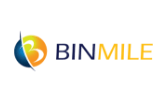

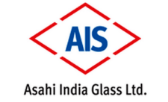

FAQ's
If you are fascinated by attaining knowledge in one of the most sought after work opportunities, computer technology then you should opt for a B.Tech ( Hons ) in Computer Science Engineering. If you have some interest and exposure to programming, software development, and coding then pursuing this course becomes easy. Make sure you are interested in Mathematics and Coding. For students who do not have much inclination for Maths and Science subjects, this course becomes a bit challenging. To make this course easy, students must have a zeal to learn different aspects related to software development, programming, and coding.
After completing B.Tech ( Hons ) in Computer Science engineering, students can choose to opt for a career in the IT industry or become an entrepreneur. They can also go for higher studies like M.Tech or M.B.A. in India or abroad. If they decide to pursue higher education then after completing it, they opt for teaching at a college/university or work as a research assistant in Universities or a research organization.
Top career options after completing BTech in Computer Science engineering, as described above, include Software Developer, Computer Network Architect, Database Administrator, Full Stack Developer, Information Security Analyst Blockchain developer, etc. Other employment areas include website development, app development, software testing, software quality assurance, database administration, data science, and research.
To obtain admission to B.Tech ( Hons ) CSE, the two available options are merit-based admission and entrance exam-based admission.
In merit-based admission, candidates need to apply at the official website of the college. Subsequently, they need to fill the application form along with the subject they intend to pursue. Finally and wait till the merit list of that college is released.
In entrance exam-based admission, candidates need to check the available entrance exams from the official website of the college and apply for the appropriate exam. If they qualify, they would be eligible to apply at the college’s official portal.
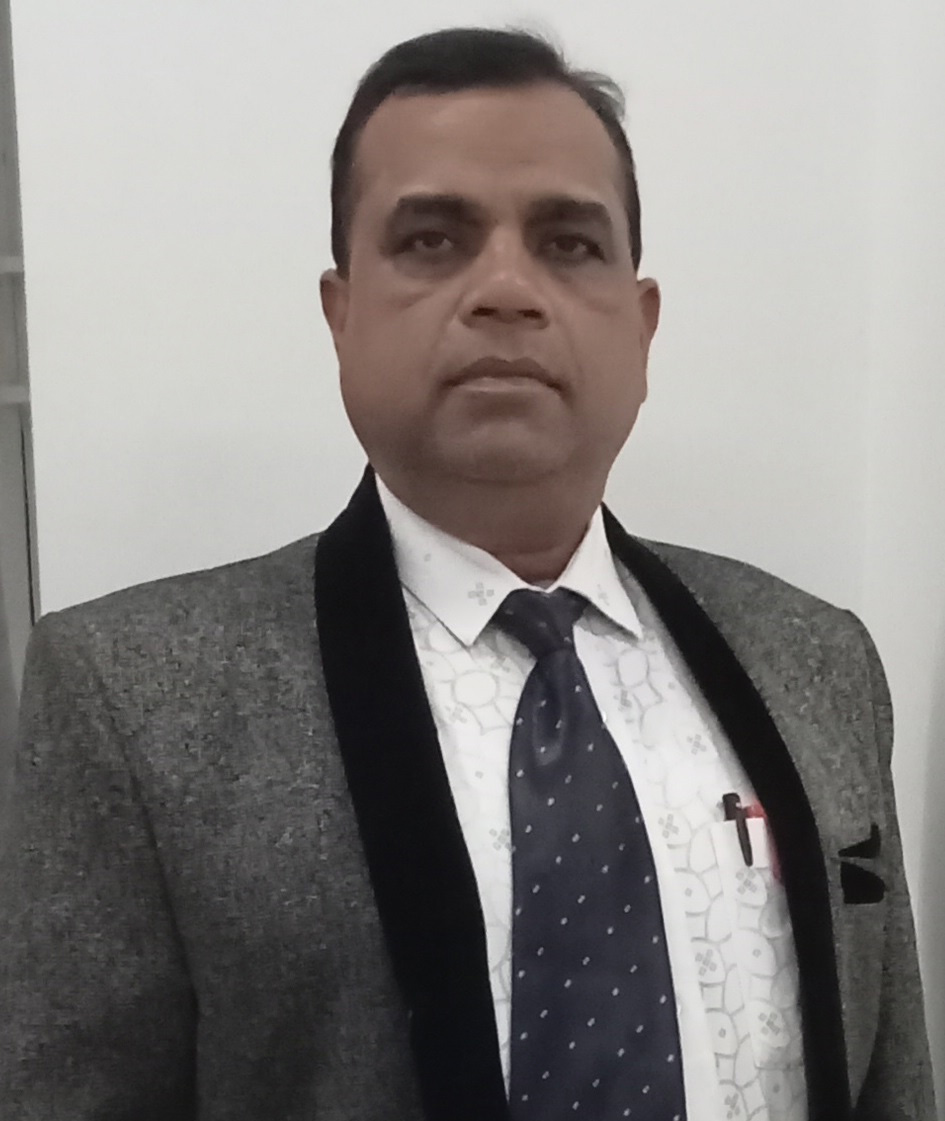
Mr. Sartaj Khan, an alumnus of Government Engineering College, Jabalpur (MP) holds M Tech degree in Computer Science and Engineering from U P Technical University, Lucknow and is pursuing PhD in Computer Science from Sharda University, Gr Noida. After spending about One and half years in the industry, Mr. Khan entered into the field of Academics in September 2000 and joined Sharda Group of Institutions. Till Jan 2014, he was associated with Hindustan Institute of Management & Computer Studies, Farah, Mathura, a constituent unit of Sharda Group of Institutions (SGI). In Feb 2014, he joined Hindustan Institute of Technology & Management Agra. Currently, he is working as Assistant Professor in the Department of Computer Science and Engineering in Shivalik College of Engineering, Dehradun. Mr Khan has been Head of the Department of Computer Application from 2006 to 2011. He has been very closely associated with the other Administrative assignments of the AKTU University also. In Year 2008 and 2009, he was awarded with “Vishisht Shikshak Samman”, an honor given to the best performing teacher by Sharda Group of Institutions.
Contact Info
Social links
Curriculum
| BAST 101 BASP 101 | Engineering Chemistry |
| BAST 102 | Mathematics-I |
| BAST 103 BASP 103 | English for Communication |
| BEET 101 BEEP 101 | Basic Electrical & Electronics Engineering |
| BCST 101 BCSP 101 | Fundamentals of Computers & Programming in C |
| BMEP 101 | Manufacturing Practices / Workshop |
| BASP 102 | Internship-I (60 Hrs Duration) at the Institute level |
| BAST 104 BASP 104 | Engineering Physics |
| BAST 105 | Mathematics-II |
| BMET 102BMEP 102 | Basic Mechanical Engineering |
| BCET 101 BCEP 101 | Basic Civil Engineering & Mechanics |
| BMEP 103 | Engineering Graphics |
| BASP 106 | Language Lab & Seminars |
| BEST 101 | Environmental Studies |
| BCET-301 | Energy & Environmental Engineering |
| BCST-302 | Discrete Structure |
| BCST-303 BCSP-303 | Discrete Structure |
| BCET-304 BECP-304 | Data Structure |
| BEET-305 BEEP-305 | Object Oriented Programming & Methodology |
| BCSP-306 | Computer Workshop (Using Python) |
| BASP-107 | Evaluation of Internship-I completed at I year level /Seminar for Lateral Entry students |
| BAST 401 | Mathematics- III |
| BECT 402 BECP 402 | Database Management Systems |
| BECT 403 BECP 403 | Software Engineering |
| BEET 404 BEEP 404 | Computer Org. & Architecture |
| BEET 404 BEEP 404 | Theory of Automata and Formal Languages |
| BHUT 401 | Universal Human Values-2 |
| BCST 501 BCSP 501 | Operating System |
| BCST 502 BCSP 502 | Computer Networks |
| BCST-503 BCSP-503 | Design and Analysis of Algorithms |
| BCST-504 | Departmental Elective-I |
| BOCS-505 | Open Elective-I |
| BCST-506 | Virtual Lab (Unix/Linux/python/JAVA etc) |
| BCST-508 | Evaluation of Internship-II completed at II year level |
| BCST-601 BCSP-601 | Microprocessors and Applications |
| BCST-602 BCSP-602 | Compiler Design |
| BCST-603 BCSP-603 | Data Analytics |
| BCST-604 | Departmental Elective |
| BOCS-605 | Open Elective |
| BCSP-606 | Open Source Lab/Matlab Programming |
| BCSP-607 | Minor Project -I |
| BCST 701 BCSP 701 | .NET Framework and Programming |
| BCST-702 BCSP-702 | Ad hoc and Wireless Networks |
| BCST-703 | Departmental Elective |
| BCST-704 | Open Elective |
| BCSP-705 | Virtual Lab |
| BCSP-706 | Evaluation of Internship-III completed at III year level |
| BCSP-707 | Minor Project-II |
| BCST-801 BCSP-801 | Advanced Operating Systems |
| BCST-802 BCSP-802 | Cryptography & Network Security |
| BCST-803 | Departmental Elective |
| BOCS-804 | Open Elective |
| BCSP-805 | Major Project |
Program Specific Outcomes and Program Educational Objectives
Engineering knowledge: Apply the knowledge of mathematics, science, engineering fundamentals, and anengineering specialization to the solution of complex engineering problems
Problem analysis: Identify, formulate, review research literature, and analyze complex engineering problems reaching substantiated conclusions using first principles of mathematics, natural sciences, andengineering sciences
Design/development of solutions: Design solutions for complex engineering problems and design system components or processes that meet the specified needs with appropriate consideration for the public health and safety, and the cultural, societal, and environmental considerations.
Conduct investigations of complex problems: Use research-based knowledge and research methods including design of experiments, analysis and interpretation of data, and synthesis of the information toprovide valid conclusions
Modern tool usage: Create, select, and apply appropriate techniques, resources, and modern engineering and IT tools including prediction and modeling to complex engineering activities with an understanding ofthe limitations
The engineer and society: Apply reasoning informed by the contextual knowledge to assess societal, health, safety, legal and cultural issues and the consequent responsibilities relevant to the professionalengineering practice
Environment and sustainability: Understand the impact of the professional engineering solutions insocietal and environmental contexts, and demonstrate the knowledge of, and need for sustainable development
Ethics: Apply ethical principles and commit to professional ethics and responsibilities and norms of theengineering practice
Individual and team work: Function effectively as an individual, and as a member or leader in diverse teams, and in multidisciplinary settings
Communication: Communicate effectively on complex engineering activities with the engineering community and with society at large, such as, being able to comprehend and write effective reports and design documentation, make effective presentations, and give and receive clear instructions.
Project management and finance: Demonstrate knowledge and understanding of the engineering and management principles and apply these to one‘s own work, as a member and leader in a team, to manage projects and in multidisciplinary environments
Life-long learning: Recognize the need for, and have the preparation and ability to engage in independent and life-long learning in the broadest context of technological change.
Understand the application of computer science & engineering principles in information technology (IT) products and services industries.
Apply the knowledge of algorithmic techniques, programming languages and software applications to design, implement and support information systems
To groom the students for a bright and successful multidisciplinary career either in industry or academia both locally and globally with the aim that he/she becomes the preferred choice of the prospective employer.
To expose students to tools and techniques of Computer Science and Engineering so that they create innovative computing products.
To develop the ability among students to identify, conceptualize, design & develop, install and implement the appropriate solutions for real life problems in a rational manner.
To inculcate administrative & communication skills, human and ethical values among the students to develop team spirit for congenial work culture.
To generate among the students, a passion to pursue lifelong learning and up gradation to sustain their career with leadership qualities and a proactive approach.
Facilities
SHIVALIK COLLEGE OF ENGINEERING
| CO Sl. No | COURSE OUTCOMES | Mapping of course
outcome with PO and PSO |
| PROGRAM – Computer Science & Engineering | ||
| BCET301 Energy Environmental Engineering | ||
| BECT 301 | CO1- Differentiate between various energy generation systems and asses the environmental impacts of each one of those
CO2- Describe interrelationship of environmental policy initiatives vis-à-vis various sources of energy generation CO3- Illustrate the nature of pollution caused by various sources of energy generation. CO4- Illustrate the dependencies for utilizing Hydrogen as a fuel for generating energy. CO5- Demonstrate the principles of co-generation of electricity through the implementation of a hybrid inverter CO6- Choose between two competing sources of energy generation by making a case study |
PO1,PO2,PO5,PO6, PO7, PO12 |
| BCST-302 Discrete Structure | ||
| BCST-302 | CO1- Understand a logical sentence in terms of predicates, quantifiers, and logical connectives
CO2- Describe mathematical notations, syntax and semantics of discrete mathematics CO3- Derive the solution using deductive logic and prove the solution based on logical inference for a given problem CO4- Classify Algebraic structure of a given mathematical problem CO5- Evaluate Boolean functions and simplify expressions using the properties of Boolean algebra CO6- Develop the given problem as graph networks and solve with techniques of graph theory. |
PO1,PO2,PO3,PO4,PO12 PSO1,PSO2 |
| BCST-303 DATA STRUCTURE | ||
| BCST-303 | CO1- Tell the concept of dynamic memory management, data types, algorithms, Big O notation
CO2- Explain basic data structures such as arrays, linked lists, stacks and queues CO3- Apply Algorithm for solving problems like sorting, searching, insertion and deletion of data CO4- Analyze searching and sorting techniques. CO5- Determine the hash function and concepts of collision and its resolution methods CO6- Solve problem involving graphs, trees and heaps |
PO1,PO2,PO3,PO4, PSO1,PSO2 |
| BCSP 303 Data Structure | ||
| BCSP 303 | CO1- Implement basic data structures such as arrays and linked list.
CO2- Programs to demonstrate fundamental algorithmic problems including Tree Traversals, Graph traversals, and shortest paths CO3- Implement various searching and sorting algorithms CO4- Programs to demonstrate the implementation of various operations on stack and queue. CO5- Appropriately use the linear / non-linear data structure operations for a given problem CO6- Apply appropriate hash functions that result in a collision free scenario for data storage and retrieval. |
PO1,PO2,PO3,PO4, PO6,PO7,PO9,PO8, PSO1,PSO2
|
| BECT 304 Digital Electronics | ||
| BECT 304 | CO1- Understand various number systems and logic functions and their application in digital design.
CO2- Illustrate various combinational logic circuits CO3- Design various synchronous sequential logic circuits CO4- Compare different types of logic families which are the base of different types of logic gates in the domain of economy, performance and efficiency CO5- Determine fault detection techniques for digital logic circuits CO6- Classify different semiconductor memories |
PO1,PO2,PO3,PO4,PO5, PO6,PO7,PO9,PO10,PO11, PO12, PSO1,PSO2 |
| BECP 304 Digital Electronics | ||
| BECP 304 | CO1- Learn the basics of gates.
CO2- Construct basic combinational circuits and verify their functionalities CO3- Apply Boolean laws to simplify the digital circuits. CO4- Apply the design procedures to design basic sequential circuits |
PO1,PO2,PO3, PSO1,PSO2 |
| BEET 305 Object Oriented Programming & Methodology | ||
| BEET 305 | CO1- Identify editors, Integrated development environment software packages and programming features
CO2- Classify various Software Development Life cycle models. CO3- Use object oriented approach to design software CO4- Compare different types of testing techniques CO5- Explain database query processing and formulate its optimization CO6- Develop programs using classes and objects. |
PO1,PO2,PO3, PSO1,PSO2 |
| BEEP 305 | CO1-Develop and implement programs for simple applications that make use of classes
CO2- Develop and implement programs with array list CO3- Develop and implement programs for simple applications that make use of classes CO4- Programs to demonstrate the implementation of constructors, destructors and operator overloading |
PO1,PO2,PO3,PO4, PSO1,PSO2 |
| BCSP-306 Computer Workshop (Using Python) | ||
| BCSP-306 | CO1- Write, Test and Debug Python Programs
CO2- Implement Conditionals and Loops for Python Programs CO3- Use functions and represent Compound data using Lists, Tuples and Dictionaries CO4- To acquire Object Oriented Skills in Python |
PO1,PO2,PO3,PO4, PO5,PO6,PO7,PO8, PO11, PO12, PSO1, PSO2 |
| BAST 401 Mathematics- III | ||
| BAST 401 | CO1- Understand the Concept of Curve Fitting by the method of Least Square.
CO2- Understand the solution of linear differential equation using Runga-Kutta and Milne-Thomson Predictor and Corrector method. CO3- Understand the concept of Skewness and Kurtosis and Correlation and Regression. CO4- Understand the Concept of Interpolation, Numerical Differentiation and Numerical Integration. CO5- Calculate the root of algebraic and transcendental equations by the help of Numerical Methods. CO6- Understand the concept of Laplace and Fourier Transform and APPLY in solving Differential Equations and Engineering Problems. |
PO1,PO2,PO3,PO4, PSO1,PSO2 |
| BCST 402 Database Management Systems | ||
| BCST 402 | CO1- understand database system architecture and data models
CO2- analyze and evaluate algebraic expressions and need for normalization CO3- Implement different concurrency techniques and its protocol CO4- Understand various database security mechanisms CO5- Understand advance topics in dbms |
PO1, PO2, PO3, PO4, PO5, PO6, PO7, PO8, PO9, PO10, PO11, PO12, PSO1, PSO2 |
| BCSP 402 Database Management Systems | ||
| BCSP 402 | CO1- Apply the basic concepts of Database Systems and Applications
CO2-Use the basics of SQL and construct queries using SQL in database creation and interaction CO3-Design a relational database system (Oracle, MySQL) by writing SQL using the system. CO4-Analyze and Select storage and recovery techniques of database system. |
PO1,PO2,PO3,PO4, PO5, PO12, PSO1,PSO2 |
| BCST 403 Software Engineering | ||
| BCST 403 | CO1- Ability to identify the minimum requirements for the development of application
CO2- Ability to develop, maintain, efficient, reliable and cost effective software solutions CO3- Ability to critically thinking and evaluate assumptions and arguments by using variant software architectural styles & software process models CO4- Understanding of software testing approaches such as unit testing and integration testing CO5- Understanding on quality control and how to ensure good quality software. CO6- Evaluate Interpret the project schedule, estimate project cost and effort required. |
PO1, PO2, PO3, PO4, PO5, PO6, PO10, PO11, PO12, PSO1, PSO2 |
| BCSP 403 Software Engineering | ||
| BCSP 403 | CO1- Understand the software engineering methodologies involved in the phases for project development
CO2- Knowledge about open source tools used for implementing software engineering methods. CO3- Ability to develop product-startups implementing software process models in software engineering methods CO4- Understanding Open source Tools: StarUML / UMLGraph / Topcased |
PO1,PO2,PO3,PO4. PO12, PSO1,PSO2 |
| BCST 404 Computer Org. & Architecture | ||
| BCST 404 | CO1- Apply different type of arithmetic algorithm and number systems which are used in digital communication and computer systems.
CO2- Apply the different type of instruction set on hardwired and micro-programmed control unit of the CPU. CO3- Interpretation of processor design, addressing modes and input output Organization CO4- Distinguish the organization of various parts of a system memory hierarchy CO5- Synthesizing the Parallel Processing and Characteristics of Multiprocessor |
PO1,PO2,PO3,PO4, PSO1,PSO2 |
| BCSP 404 Computer Org. & Architecture | ||
| BCSP 404 | CO1-. Analyze the behavior of Logic Gates with the help of HDL/ VHDL.
CO2. Implement sequential circuits and verify the results through simulation by VHDL CO3-Understanding the behavior of logic gates ,adders, decoders CO4-Understanding the behavior of ALU, RAM, STACK and PROCESSOR from working module. |
PO1,PO2,PO3,PO4, PSO1,PSO2 |
| BCST 405 Theory of Automata and Formal Languages | ||
| BCST 405 | CO1- Understanding of the core concepts in automata theory and formal languages.
CO2-Identify different formal language classes and their relationships CO3- Design grammars and automata (recognizers) for different language classes. CO4- Generate the strings/sentences of a given context-free languages using its grammarCO5- Design Pushdown Automata machine for given CF languages CO6- Design Turing machines for given any computational problem |
PO1,PO2,PO3,PO4,PSO1,PSO2 |
| BHUT401 Universal Human Values-2 | ||
| BHUT401 | CO1- Understand Human values, need and concept in individual’s life
CO2- Analyze the concept of co-existence and evaluate the program to ensure self-regulation CO3- Understand and identify holistic perception of harmony at all levels such as self , family , society and nature CO4- Reshape the concept about different values and discriminate them CO5- Apply professional ethics in future profession and contribute towards building a value based society CO6- Incorporate self-exploration and its application for self-evaluation and development. |
PO6,PO7,PO8, PO12 |
| BCST- 501 Operating System | ||
| BCST- 501 | CO1- Explain the overall view of the computer system and operating system.
CO2- Apply various CPU scheduling algorithms, synchronization primitives and deadlock handling methods CO3- Compare and contrast various memory management schemes and file system functionalities CO4- Analyze the performance of the various page replacement algorithms and interpret the file system implementation, sharing and protection mechanisms CO5- Analyze the performance of the various disk scheduling algorithms CO6- Demonstrate administrative tasks on Linux servers and to be familiar with the basics of Mobile OS like iOS and Android |
PO1,PO2,PO3, PO4, PO5, PO6, PO7, PO11, PSO1,PSO2 |
| BCSP- 501 Operating System | ||
| BCSP- 501 | CO1- Compare the performance of various CPU Scheduling Algorithms.
CO2- Implement Deadlock avoidance and Detection Algorithms. CO3- Create processes and implement IPC. CO4- Analyze the performance of the various Page Replacement Algorithms. |
PO1,PO2,PO3,PO4, PO5, PSO1,PSO2 |
| BCST -502 Computer Networks | ||
| BCST -502 | CO1- Enumerate the layers of OSI and TCP/IP models and explain the function of each layer.
CO2- Explain the basic computer network technology and how data communication takes place in internet. CO3- Identify computer network components, network topologies and protocols CO4- Analyze the features and operations of various application layer protocols such as DNS, FTP, HTTP, SMTP etc CO5- Design, calculate and apply subnet masks and addresses to fulfill networking requirements, building skills of sub netting and routing mechanism CO6- Discuss familiarity with fundamentals of File transfer, access and management, virtual terminal, public networks. |
PO1,PO2,PO3, PO4, PO5,PO9,PO10, PSO1,PSO2 |
| BCSP- 502 Computer Networks | ||
| BCSP- 502 | CO1- Configure a LAN based on IPv4 address scheme and understand and implement IPv6 address scheme for a LAN
CO2- Configure and simulate any scenario of an Adhoc network and analyze various parameters related with their study CO3- Devise and design a system to capture and analyze the incoming traffic using packet capturing software package CO4- Configure WLL, PAN’s, WLANS and wireless access points. |
PO1,PO2,PO3,PO4, PSO1,PSO2 |
| BCST -503 Design and Analysis of Algorithms | ||
| BCST -503 | CO1- Choose appropriate advanced data structure for given problem.
CO2- Explain and Compare the various algorithms (dynamic, greedy & backtracking) to solve real world problems. CO3- Calculate complexities of recursive algorithms using substitution, iteration, recursion tree & master theorem. CO4- Compare and the use of various graph algorithms (Minimum Spanning Trees, Single-source Shortest Paths, All-Pairs Shortest Paths, Maximum Flow, and Traveling Salesman Problem). CO5- Select a accurate pattern matching algorithm for given problem. CO6- Anticipate p and np classes for existing sorting and other algorithm. |
PO1,PO2,PO3,PO4, PSO1,PSO2 |
| BCSP-503 Design and Analysis of Algorithms | ||
| BCSP-503 | CO1- Identify the problem given and design the algorithm using various algorithm design techniques
CO2- Implement various algorithms in a high level language. CO3- Analyze the performance of various algorithms. CO4- Compare the performance of different algorithms for same problem |
PO1,PO2,PO3,PO4, PSO1,PSO2 |
| BCST 504 (D) Java Programming | ||
| BCST 504 (D) | CO1- Use the syntax and semantics of java programming language
CO2- Develop reusable programs using the concepts of inheritance, polymorphism, interfaces and packages CO3- Write Java application programs using OOP principles and proper program structuring CO4- Apply the concepts of Multithreading and Exception handling to develop efficient and error free codes. CO5- demonstrate skills in writing programs using exception handling techniques and multithreading. CO6- Design event driven GUI and web related applications which mimic the real word scenarios. |
PO1,PO2,PO3,PO4, PO5,PO6,PO7,PO11, PSO1,PSO2 |
| BOCS -505 (A) Principles of Programming Language | ||
| BOCS -505 (A) | CO1- Identify language abstraction constructs of classes, interfaces and packages and procedures
CO2- Understand fundamental concept of various types of programming languages like procedure oriented, object oriented CO3- Demonstrate knowledge of programming languages using examples CO4- Analyze semantic issues associated with function implementations, including variable binding, scoping rules, exception handling CO5- Evaluate programming languages by testing and debugging. |
PO1,PO2,PO3,PO4, PO12 PSO1,PSO2 |
| BCST -506 Virtual Lab (Unix/ Linux/python/JAVA etc) | ||
| BCST -506 | CO1- apply comprehensions, different Decision-Making statements and Functions
CO2- implement various data types like lists, tuples, strings CO3- use different File handling operations and Maps CO4- Use Pandas and Matplotlib in developing various applications |
PO1, PO2, PO3, PO4, PO5, PO6, PO11, PO12, PSO1, PSO2 |
| BCST-601 Microprocessors and Applications | ||
| BCST-601 | CO1-Illustrate the fundamental concepts, evolution of microprocessors and identify the different architectures
CO2-Demonstrate a detailed software & hardware structure of the 8086 Microprocessor along with addressing modes and compare with 8088 microprocessor. CO3-Develop and insight in to the instruction set of 8086 and apply it to write programs in assembly language. CO4- Analyze how basic peripherals like input/output, memory, ADC, DAC are interfaced with Microprocessor CO5- Explain special purpose programmable peripherals like timers, PIC, USART. CO6- Illustrate about microcontrollers and embedded systems, explain the hardware and software structure of 8051 and applications of microcontrollers |
PO1,PO2,PO3,PO4,PO5,PO6,PO11,PO12, PSO1,PSO2 |
| BCSP-601 Microprocessors and Applications | ||
| BCSP-601 | CO1- Learn importance of Microprocessors in designing real time applications
CO2- Describe the 8085,8086 Microprocessors architectures and its feature. CO3-Design, code and debugs Assembly Language programs to implement simple programs. CO4-Apply programming knowledge using the capabilities of the stack, the program counter |
PO1,PO2,PO3,PO4,PO5, PSO1,PSO2 |
| BCST – 602 Compiler Design | ||
| BCST – 602 | CO1- Understand basic knowledge of compilation steps
CO2- Design and Implement scanner modules in compiler CO3- Understand the application of finite state machines ,recursive descent production rules parsing and languages semantics CO4- Identify and select suitable parsing strategies for a compiler for various cases CO5- Learn about the intermediate code generation in compilation process CO6- Acquire knowledge about instruction level optimization . |
PO1,PO2,PO3,PO4,PO5, PSO1,PSO2 |
| BCSP-602 Compiler Design | ||
| BCSP-602 | CO1- Design Lexical analyzer for given language using C and LEX tools.
CO2- Design and convert BNF rules into YACC form to generate various parsers CO3- Generate machine code from the intermediate code forms CO4- Implement Symbol table |
PO1,PO2,PO3,PO4, PO11,PO12, PSO1,PSO2 |
| BCST -603 Data Analytics | ||
| BCST -603 | CO1-Students will develop relevant programming abilities.
CO2-Students will demonstrate proficiency with statistical analysis of data. CO3-Students will develop the ability to build and assess data based models. CO4-Students will execute statistical analyses with professional statistical software. CO5-Students will demonstrate skill in data management. CO6-Students will apply data science concepts and methods to solve problems in real- world contexts and will communicate these solutions effectively |
PO1,PO2,PO3,PO4, PO5,PO7,PO12, PSO1,PSO2 |
| BCSP-603 Data Analytics | ||
| BCSP-603 | CO1-Understand and implement the basics of data structures like Linked list, stack, and queue, set and map in Java.
CO2-Demonstrate the knowledge of big data analytics and implement different file management task in Hadoop. CO3-Understand Map Reduce Paradigm and develop data applications using variety of systems CO4-Illustrate and apply different operations on relations and databases using Hive |
PO1,PO2,PO3,PO4, PO6, PSO1,PSO2 |
| BCST 604(C) Computer Graphics and Visualization | ||
| BCST 604(C) | CO1-Classify of the core concepts of computer graphics
CO2-Describe various Computer Graphics tools and techniques CO3-Able to Compare various object representation CO4-Organize various algorithms of 2D and 3D Transformations on different type of objects. CO5-Summarizing a typical graphics pipeline view CO6-Understand multimedia knowledge |
PO1,PO2,PO3,PO4,PO5,PO6 PSO1,PSO2 |
| BOCS -605(A) Digital Signal Processing | ||
| BCSP-606 Open Source Lab/Matlab Programming | ||
| BCSP-606 | CO1-Understand the need for simulation/implementation for the verification of mathematical functions
CO2-Understand the main features of the MATLAB/SCILAB program development environment to enable their usage in the higher learning CO3-Interpret and visualize simple mathematical functions and operations thereon using plots/display. CO4-Implement simple mathematical functions/equations in numerical computing environment such as MATLAB |
PO1,PO2,PO3,PO12, PSO1,PSO2 |
| BOCS –
605(A) |
CO1. Interpret, represent and process discrete/digital signals and systems
CO2. Thorough understanding of frequency domain analysis of discrete time signals. CO3. Ability to design & analyze DSP systems like FIR and IIR Filter etc. CO4. Practical implementation issues such as computational complexity, hardware resource limitations as well as cost of DSP systems or DSP Processors. CO5.Understanding of spectral analysis of the signals CO6. Understanding and working knowledge of signal processing techniques |
PO1,PO2,PO3,PO4,PO6, PO12, PSO1,PSO2 |
| BCST 701 .NET Framework and Programming | ||
| BCST 701 | CO1- Understand the Microsoft .NET Framework and ASP.NET page structure
CO2- Understand code solutions and compile C# projects within the .NET framework CO3- Demonstrate knowledge of object-oriented concepts Design user experience and functional requirements C#.NET application. CO4- Construct classes, methods, and assessors, and instantiate objects. CO5- Design and Implement database connectivity using ADO.NET in window based application |
PO1,PO2,PO3 PO4,PO5,PO9 PO10, PSO1,PSO2 |
| BCSP 701 NET Framework and Programming | ||
| BCSP 701 | CO1- Evaluate C# and the .NET framework namespace contents.
CO2- Set up various navigation techniques for integrating web pages within the site CO3- Create the dynamic web page using ASP.NET Controls which interact with databases CO4- Explain advanced concepts related to Web Services, WCF and WPF in project development |
PO1,PO2,PO3, PO12, PSO1,PSO2 |
| BCST -702 Ad hoc and Wireless Networks | ||
| BCST -702 | CO1-Define the fundamentals of Mobile ad-hoc Networks
CO2- Describe current technology trends for the implementation and deployment of wireless ad-hoc/sensor networks. CO3- Discuss the challenges in designing MAC, routing and transport protocols for wireless ad-hoc/sensor networks. CO4- Identify and describe various types of applications for MANETs and WANS CO5- Apply different routing technologies for designing a routing protocol. CO6- Demonstrate the ability to solve security related problems using a routing Protocol. |
PO1,PO2,PO3,PO4, PO5,PO6,PO7,PO12, PSO1, PSO2 |
| BCSP-702 Ad hoc and Wireless Networks | ||
| BCSP-702 | CO1- Simulate different topologies of Ad-hoc networks.
CO2- Implement the physical and MAC layer protocols of Ad hoc networks. CO3- Apply TCP and UDP protocols for Ad-hoc networks. CO4- Demonstrate the SPIN protocol of WSNs |
PO1,PO2,PO3,PO4, PO6,PO7,PO9,PO12, PSO1,PSO2 |
| BCST 703(A) Human Computer Interfacing | ||
| BCST 703(A) | CO1- Acquire fundamental concepts of computer components functions regarding interaction with human and vice versa.
CO2- Analyze interface problems to recognize what design approach and interaction styles is required in the light of usability standards and guidelines CO3-Understand the theoretical dimensions of human factors involved in the acceptance of computer interfaces. CO4- Evaluate the Internet sites considering; usability and user appreciation designs CO5-Identify the various tools and techniques for interface analysis, design, and evaluation. CO6- Ability to design and develop an interface by using appropriate HCI techniques that are preferred by the user. |
PO1,PO2,PO4,PO5, PO6 ,PO12, PSO1,PSO2 |
| BOCS -704(B) Digital Image Processing | ||
| BOCS -704(B) | CO1- understands the need for image transforms different types of image transforms and their properties.
CO2- Analyze images in the frequency domain using various transforms CO3- Evaluate the techniques for image enhancement and image restoration. CO4- Categorize various compression techniques. CO5- Describe objects detection and recognition techniques. CO6- Interpret image segmentation and representation techniques. |
PO1,PO2,PO3,PO4, PSO1,PSO2 |
| BCSP -705 Virtual Lab | ||
| BCSP -705 | CO1: apply comprehensions, different Decision-Making statements and Functions.
CO2: implement various data types like lists, tuples, and strings. CO3: use different File handling operations and Maps. CO4: apply Object oriented programming in Python types. |
PO1,PO2,PO3, PO5,PO6, PO11,PO12, PSO1,PSO2 |
| BCST-801 Advanced Operating Systems | ||
| BCST-801 | CO1- UNDERSTAND high-level OS kernel structure.
CO2- UNDERSTAND hardware-software interactions for compute and I/O. CO3- Analyze system tracing and performance analysis. CO4- Apply research ideas in system structure and behavior CO5- UNDERSTAND how to write systems-style performance evaluations |
PO1, PO2, PO3, PO4, PO6, PO7, PO8,PO9, PO10, PO11, PO12, PSO1, PSO2 |
| BCSP-801 Advanced Operating Systems | ||
| BCSP-801 | CO1-Understand Kernel Tracing – I/O
CO2-Analyze Kernel Implications of IPC CO3- Understand Micro-Architectural Implications of IPC 4. CO4-Understand TCP Latency and Bandwidth |
PO1,PO2,PO3,PO5, PSO1,PSO2 |
| BCST -802 Cryptography & Network Security | ||
| BCST -802 | CO1- Analyze and design classical encryption techniques and block ciphers.
CO2- Understand and analyze data encryption standard. CO3- Understand and analyze public-key cryptography, RSA and other public-key cryptosystems CO4- Design network application security schemes, such as PGP, S/ MIME, IPSec, SSL, TLS, CO5- Understand vulnerability assessments and the weakness of using passwords for authentication CO6- Understand various protocols for network security to protect against the threats in the networks. |
PO1,PO2,PO3, PO5,PO6, PO12, PSO1,PSO2 |
| BCSP-802 Cryptography & Network Security | ||
| BCSP-802 | CO1- Understand the fundamental principles of access control models and techniques, authentication and secure system design
CO2- Have a strong understanding of different cryptographic protocols and techniques and be able to use them CO3- Apply methods for authentication, access control, intrusion detection and prevention CO4-Identify and mitigate software security vulnerabilities in existing systems. |
PO1,PO2,PO3, PO4,PO5, PSO1,PSO2 |
| BCST 803 (E) Blockchain | ||
| BCST 803 (E) | CO1- Understand the various technologies and its business use.
CO2-Analyze the block chain applications in a structure manner. CO3- Explain the modern concepts of block chain technology systematically. CO4- Implement Ethereum block chain contract CO5- Apply security features in block chain technologies. CO6- Use smart contract in real world applications |
PO1,PO2,PO3, PO6,PO8, PO11, PSO1,PSO2 |
| BOCS -804(A) Fault Tolerant Computing | ||
| BOCS -804(A) | CO1-Understand techniques to model faults and know how to generate tests and evaluate effectiveness
CO2-Evaluatereliability of systems with permanent and temporary faults CO3-Determine applicability of these forms of redundancy to enhance reliability: spatial, temporal, procedural CO4-Assess the relation between Software testing and residual defects and security vulnerabilities devise CO5-Analyze potential solutions for emerging issues. CO6- Understand software reliability growth, security vulnerary abilities and emerging issues. |
PO1,PO2,PO3, PO4,PO5 PO6 PSO1,PSO2 |
| BCSP -805 MAJOR PROJECT | ||
| BCSP -805 | CO1-Identify the problem by applying acquired knowledge
CO2- Analyzes and categorize executable project module after considering risk. CO3 – Choose efficient tools for designing project modules CO4 – Combine the entire module through effective team work after efficient testing. CO5 – Elaborate the completed task and compile the project report. |
PO1,PO2,PO3, PO4,PO5, PO6, PO7,PO8, PO9, PO10, PO11,PO12, PSO1,PSO2 |
Vision & Mission
Vision of the Department
The Department of Computer Science and Engineering is committed to provide a center of excellence in upcoming technologies to keep on students as well as faculty with innovation ideas, equipped with requisite skills as per the latest industry standards and highly dynamic professionals having regard for ethics and human values so as to serve the society.
Mission of the Department
My name is Arun Negi and I am from Dehradun. I am pursuing my BTech in computer Science from Shivalik College of Engineering I have joined this organisation in year 2020 & since then I have learnt many technical subjects which are very important from placement point of view like DBMS, OS, DSA and many more. Also I took part in some of the cultural fest and hackathon organised by Shivalik college. Many internship opportunities are also provided by the college in the companies like PaloAlto,Triology etc.
According to me the guidance provided by Shivalik college proves helpful for me to gain the knowledge which is very long lasting.
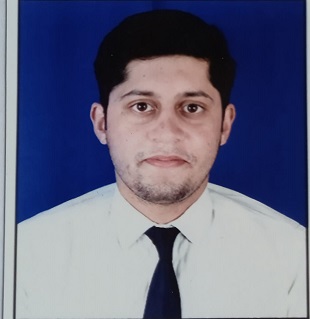 Dhruv Raj
B.tech CSE | 3rd Year
Dhruv Raj
B.tech CSE | 3rd Year
Hi! I am Dhruv Raj a student of b.tech CSE 3rd year from Shivalik College of engineering, Dehradun I am from Nainital Uttarakhand I have been Shivalik in the year 320 I am a defence aspirant I always scarched for a college which can provide me with an ideal platform my search and let as Shivalik college in Shivalik we have a well established NCC (National cadet corps). I have been NCC cadet for 3 years and ended my journey of being and under officer during my journey I got an opportunity to command the guard of honor for governer of Uttarakhand for three times. I also got an opportunity to attend the army attachment cans with Dogra gunners at 14 field regiment artillery.
 Uday Gupta
B.tech CSE | 2nd year
Uday Gupta
B.tech CSE | 2nd year
My name is Uday Gupta currently pursuing B.Tech from Shivalik College of Engineering Dehradun Uttarakhand. This college is situated at a very beautiful place in the Shivalik Range. Its my second year in this college and here I got a very vast field to explore my skills. This college is affiliated to UTU which provide Great Value to the college. Here at Shivalik College of Engineering I got an opportunity to explore myself I am a student of CSE branch so they provide great facilities which include great computer labs, software equipments, and atmosphere to learn new things. Shivalik College of Engineering is very supportive and helpful. Our HOD also helps me in development of personality which is very important in placements and they also help me to focus on my week points and to work on it. Shivalik College of Engineering is full of opportunities if you have will power and you believe in yourself. College have great great with companies like TCS, Hitachi, daffodil, Infotech and many more mnc’s companies. So here we have a great start of care in every criteria.
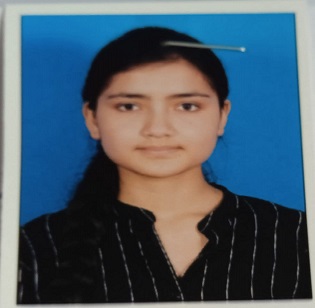 Sakshi Chamoli
Btech CSE
Sakshi Chamoli
Btech CSE
I am Sakshi chamola currently pursuing my BTech degree at Shivalik college of Engineering with specialisation in AI and Ml. I join this college for my higher studies because this is one of the best college which also comes under top 10 Institute Of Dehradun. Bachelor of Technology is a professional degree with many Real world career prospects are cross a number of practical field. I prefer to pursue this course and with the help and support from this Institute I am eager to learn more. One of the best things about college life is that you get a new experience everyday. Here at Shivalik College of Engineering which is affiliated by Uttarakhand Technical university is one of the best institute among top 10 colleges of Dehradun which offer BTech, BBA, pharmacy and Polytechnic here I have got a unique learning environment where I have discovered my full potential in Academics as well as an extra curriculum activities Shivalik offered facilities with which a student should opt practical specialisation courses that repair you to meet the professional challenges of your future are college always have interaction with leading companies like TCS,Infosys,Hitachi,Daffodil and many more because of which student never face any problem in getting placed in his or her dream companies. Our college also conducts extra activities as well as program where student shows and enhance here talent.